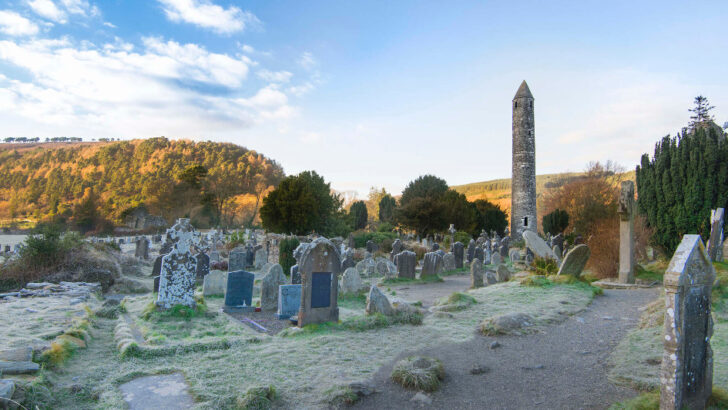St Laurence O’Toole, known in Irish as Lorcán Ua Tuathail, born in 1128 at Castledermot, Co. Kildare, Ireland, became renowned as a reformer, peacemaker, and man of deep faith. Laurence’s early life was marked by hardship; at just ten, he was handed over as a hostage to the King of Leinster, a political practice intended to secure peace between ruling clans. Despite his noble birth, Laurence endured cruelty in captivity, often going hungry, cold, and neglected. This experience profoundly shaped his values, teaching him empathy and resilience. Eventually, he was entrusted to the Bishop of Glendalough, where he was warmly welcomed. Enchanted by the monastic life, Laurence chose to remain, dedicating himself to God and the service of others.
By the age of 25, Laurence was elected Abbot of Glendalough, becoming known for his wisdom and compassion. He led his monastic community through times of hardship, including a famine, during which he sold valuable monastery items to provide food for the hungry. In 1162, Laurence was appointed Archbishop of Dublin, becoming the first Irish-born man to hold this post in a city still largely influenced by its Danish and Norse inhabitants. As Archbishop, he aimed to strengthen the faith in a community where religious observance had weakened. He invited French monks to help restore devotion, especially at Christ Church Cathedral, where he also started building in stone. A man of unyielding charity, Laurence opened his doors to the poor and homeless children, sharing his meals and shelter with them.
In 1169, the Normans arrived in Ireland at the invitation of his brother-in-law, Dermot MacMurrough, who sought Norman aid to regain his throne. Laurence attempted to mediate between the Irish and the Normans, seeking peace for the city and its people. When the Normans besieged and captured Dublin, he bravely intervened, saving many lives. His peace-making extended beyond Ireland; in 1175, he played a significant role in negotiating the Treaty of Windsor between Henry II of England and Rory O’Connor, High King of Ireland. His reputation as a mediator grew, and he often risked perilous sea journeys to England in his attempts to secure peace.
Laurence’s spirituality and dedication led him to participate in the Third Lateran Council in Rome in 1179, where he was tasked by Pope Alexander III with reforming the Irish Church. He strove to address declining religious observance in Ireland and to restore respect for the clergy. Yet his final years were marked by increasing tension with Henry II, who distrusted Irish bishops and refused to allow Laurence to return home from a diplomatic mission. Laurence followed Henry to Normandy, determined to continue his peace efforts, even though he was ill.
In 1180, at the age of 52, Laurence passed away at the monastery in Eu, Normandy. His tomb in the Collegial Church at Eu became a place of pilgrimage, a tribute to his saintly legacy of peace and compassion. He was canonised in 1225. St Laurence O’Toole is remembered not only as a reformer and protector of the poor but as a symbol of resilience and dedication to peace in a time of conflict.


 Where St Laurence spent his youth: Glendalough in winter.
Where St Laurence spent his youth: Glendalough in winter. 